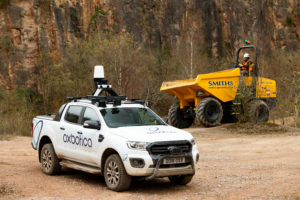Oxbotica and Transport Research Laboratory (TRL) have piloted the use of the first code of practice for the safe deployment of autonomous vehicles in unstructured off-highway environments.
According to the collaboration, off-road settings, which can include quarries, farms, warehouses, and airports, feature more varied hazards and less structured scenarios than on-road routes. The off-highway areas often have no universal rules such as speed limits or junction etiquette.
The code of practice is designed to help standardise across industries and allow learnings from each domain to be shared.

Ianto Guy, project lead at TRL, said: “The aim is that this code will support safe practice, build public confidence, and encourage the cooperation between organisations across all industries employing off-highway autonomous vehicles.
“It is hoped that off-highway industries will use this code of practice as a starting point for discussion and build on the recommendations made here to develop comprehensive best practice guidelines.”
Furthermore, the trial aimed to highlight the challenges off-road vehicles face having to interact with a wide variety of unpredictable objects in their environment. This included obstructions to the vehicle’s path, such as undergrowth or tree branches, as well as objects the vehicle engages with as part of its primary function, such as harvesting or excavating.
The live trial, conducted in a UK quarry in April, aimed to demonstrate that the code of practice could assist in overcoming such challenges. It featured a number of off-road vehicles to also highlight the potential to work across a range of industries.

Oxbotica and TRL deployed a Ford Ranger and Range Rover Evoque retrofitted with Oxbotica’s autonomy software platform. The vehicles were also fitted with a full suite of sensors, including lidar, radar, and stereo cameras.
Ben Upcroft, VP of technology at Oxbotica, said: “Our autonomy software platform is capable of being integrated with any vehicle, in any environment.
“In order to harness the true power of this technology, operational regulations need to be developed in unison to ensure safe and efficient deployment. Consortiums such as this are a key stepping-stone in ensuring the safe operation of autonomous vehicles in complex scenarios, and enabling the scale up to full commercial deployment in industry settings.”




